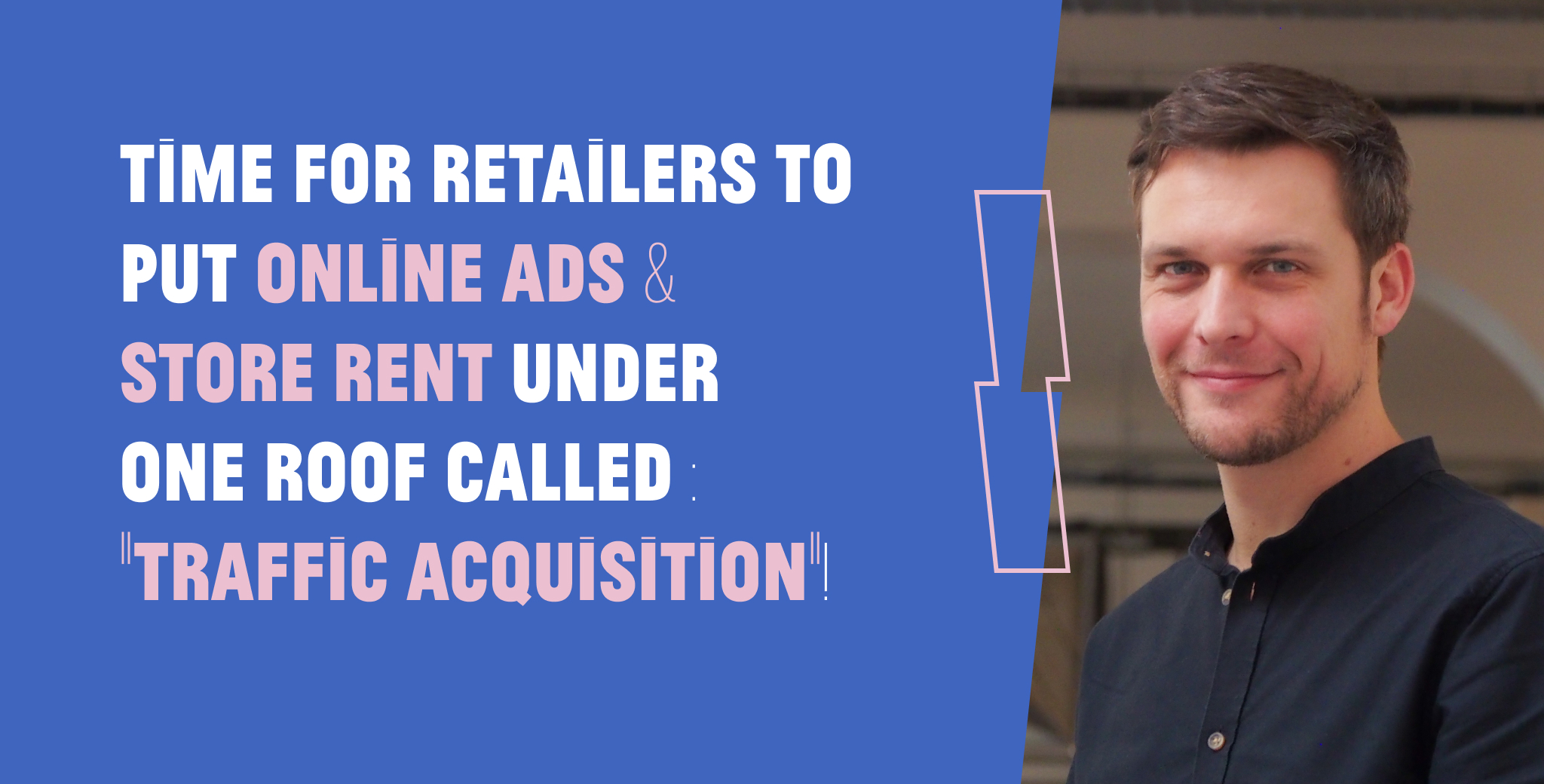For a long time, the fantasy was that stores' performance would suffer comparison with e-shops. People in the business would think rent was an oversized fixed cost that had no digital equivalent.
Well, all along that was plain wrong. Stores' performance, online and offline, can be summarised by a basic formula: traffic x conversion rate. And the cost of acquisition of online traffic is far from being free, and is the closest thing to physical store rent.
Retailers need to stop thinking that digital fixed costs are low. Online costs are no different than offline's. One can be compared or matched with the other. Besides, a high rent store is usually proportional to its high volume of traffic, just like online (but the store drives more sells)!
Let's then explore the world of omnichannel retail and see how retailers should definitely consider putting store rent and digital ads as a one and only budget labelled : "traffic acquisition".
The cost of online acquisition has surpassed in-store acquisition
It is important to understand that an e-commerce website is a store in front of which no one passes and which therefore lives on a permanent advertising budget : this is what we call rent-like digital advertising. And "rent-like ads shouldn’t be paid for from the marketing budget, they are operational", writes Grace Kite on her blog's post 'Is online marketing ‘the new rent’?'
Hence, the cost of online acquisition - with the one and only Google-approved and constantly increasing CPC- has surpassed in-store acquisition (pure rent). “Google and Facebook, control 60% of worldwide digital-ad real estate,” says The Economist in an article. Advertisers are then just allocating too much budget on online activities that don’t drive incremental sales.
And yet we’re not even mentioning halo effect, which gives the store an even bigger strategic position in the e-store and overall business success.
Halo effect? Let me briefly tell you more about it. This is what we see at Spaycial : a shopper who come to your store is more likely to make a purchase online afterwards.
Halo effect increases the number of online purchase by up to 6 times
Our analysis is based on the comparison between shoppers who went to a shopping mall in a given period and made a purchase in any store and within three days an online purchase in the same store and those who did not come to the mall and consecutively made less or non online purchase, as it is key in decision making. It is calculated that this halo effect increases the number of online purchases by 2.5 to 6 times.
For a fashion brand, it is easy to clearly differentiate a shopper who did not come and a shopper who came, thanks to his payment data. For fast retailing brands, the share of shoppers who purchased online within 3 days after an in-store purchase jumps to 25% compared to 4% for those who didn't! (January 2021 - March 2022, Spaycial data)
An omnichannel shopper is therefore more valuable and our technology, which allows us to identify them, creates this outperformance. Being able to understand omnichannel shopping behaviors allows us and brands to analyse the value of a store beyond the simple in-store revenue generated. It's also important for shopping malls which depend on those "in-store revenue based" rents to thrive.
Towards a Physical Shopper Acquisition Cost?
Thus, to limit the dependence on the digital advertising rent-like budget, the physical presence is an essential relay -this can only be understood by brands with a solid overall "traffic acquisition" strategy. Store's performance can be calculated with the right tools, to optimise the following ratio : sales on rent plus advertising budget (sales/rent+advertising). I'm even thinking further down the road : when will we be able to calculate a Physical Shopper Acquisition Cost (and really tie both costs up).
To wrap this up, I believe any retailer should rely on a traffic manager with a 360 omnichannel vision of the acquisition strategy for both online and offline traffic, to drive more qualified traffic, improve its marketing campaigns, outperform its competition and generate more revenues.
Let's truly end this piece on The Economist's article conclusion which reminds you that data is at the heart of everything : "The challenge is to move to a better system where analytics first identify which ads are rent-like and which are demand builders, and then stop reporting return on investment for the rent-like ones".


